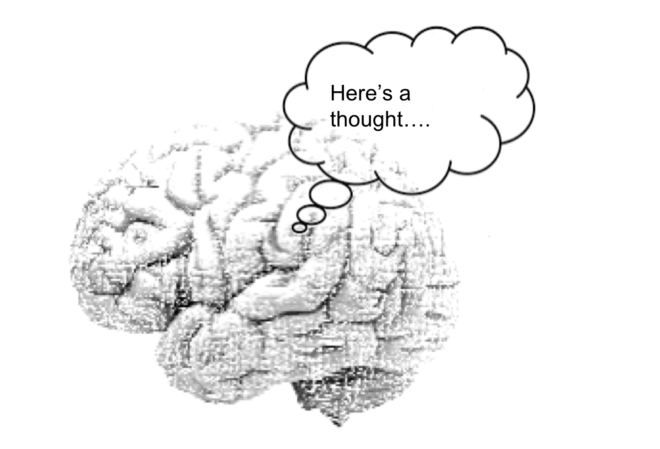We all intuitively recognize a thought when we have one but a thought is hard to describe as measurable or observable factors.
We all have thoughts. We’re all able to recognize when we have a thought. Interesting thoughts, boring thoughts, half-baked thoughts, muddled thoughts. We share our thoughts. We ask others if they have any thoughts on a subject. We write down our thoughts. In all this there is no ambiguity in our minds about our daily dealings in thoughts. Its intuitive and we don’t need to explain it to anyone, or even to ourselves. And yet if we do set about trying to describe a thought, it is profoundly difficult to do so.
Describing a Thought
The expression goes that if it looks like a duck and acts like a duck, it is a duck. This is a form of abductive reasoning that allows us to observe a set of features and recognize something or form a logical inference about it. It is not watertight of course, but it provides at least a framework of plausibility. Yet with ducks, unlike thoughts, we can observe a great many things and therefore describe them in great detail. We can provide a genetic description, physical description, behavioral description that can quite plausibly define a duck. This doesn’t work so well for a thought. What is it we should observe?
If the brain’s very purpose is to produce thoughts, if we really want to measure and understand what the brain is doing, we have to find how it creates a thought. Which means we need to have tools to measure and observe the features of a thought. Which in turn means we need to identify the features of a thought to know when we have observed them.
Philosophers and linguists both have long grappled with the ideas of meaning and semantics and how these describe or relate to thoughts. Computer scientists and the AI community have grappled with how to program a thought, describing it largely in terms of outcomes alone. Yet for those of us in Neuroscience we have worked without any framework of thought to guide our measurement of brain activity. The dominant method of identifying correlates of behaviors skirts the question entirely. Correlates may be necessary aspects of thought but certainly not sufficient and may not even represent a feature of a thought. While the movement of air and blood flow through the duck are necessary for a duck to act like a duck, they are not the factors that define the duck and allow us to identify a duck as a duck. Similarly, it is unlikely that a thought is equivalent to an increase in blood flow.
What then should we observe in order to know that we are probably looking at a thought? This is a major unanswered question and before we even get to answers, we need to first define a thought as best we can. At least to get to a broad set of ‘necessary’ features that are agreed upon. Some questions include:
- Does a thought need a clearly defined outcome? If so, how does one define such outcome?
- What is its relationship to information? Must a thought contain information?
- What is its relationship to consciousness? Must it necessarily be ‘conscious’ or is some other measure of outcome sufficient?
- Are thoughts all one thing or can there be multiple distinct types of thoughts with different types of behavior and/or representation?
Measuring a thought
Once we can draw some broad contours of description, there are other questions such as:
Must a thought necessarily have a physiological representation? Philosophers such as John Searle would disagree. Instead he contends that it is a mistake to suppose that elements of mind such as thoughts are objective and therefore objectively observable. On the other hand, as Neuroscientists we quest for the measurable and modifiable. And if not objectively observable, then what is its substance?
Nonetheless, if we assume that they are measurable, then what is the appropriate measurement? Do we define the brain in terms of anatomical structure, electrical activity and blood flow because those are things we know how to measure? Or because those are the right things to measure? Is it possible to sift through electrical activity and blood flow and define parts of them as thoughts and others as not?
And lastly, if we were to define it differently, in a way that transcends the particular mechanisms leading to its existence then, then it is would also be relevant to ask whether a thought is purely human or mammalian or is there a wider definition that will enable its measurement and recognition in other systems?
In truth, our understanding of mind and thought is nascent – that’s my thought about it anyway.



















Are thoughts and emotions created at a quantum level? We know the brain uses quantum physics and the process of quantum tunnelling so, is it possible that thoughts continue after we have passed away? Can you prove that they aren’t?